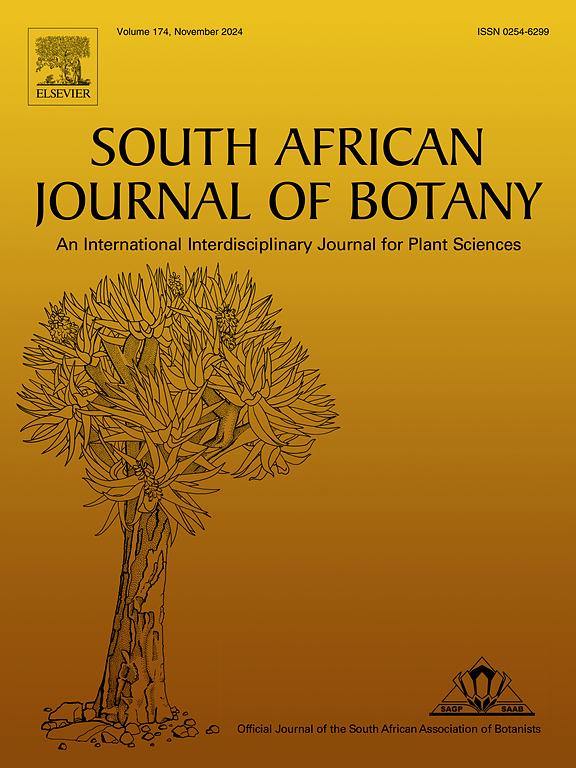Lupeol: Bioactivity-guided cytotoxic principle from Hymenocardia acida Tul. (Phyllantaceae) suppresses signaling pathways via polypharmacology antagonism
IF 2.7
3区 生物学
Q2 PLANT SCIENCES
引用次数: 0
Abstract
The use of medicinal plants in the management of cancer and related ailments has been known since time immemorial among African people. Hymenocardia acida is one such plant. This research aimed at the determination of the cytotoxic bioactive principle(s) and mechanistic determination of its mechanism of action(s). Bench-top cytotoxicity screening was carried out using Saccharomyces cerevisiae (20 – 100 µg/mL) and Raniceps ranninus (20 – 400 µg/mL), while growth inhibitory assay was carried out using Sorghum bicolor (SB) (1 - 30 mg/mL) model, the bioactivity-guided isolation of cytotoxic principle(s) was carried out using a combination of different chromatographic techniques, and probable mechanism of action was determined using in silico model. The crude extract (HA) and aqueous fraction (HAQ) Hymenocardia acida exhibited 100 % mortality on the Raniceps ranninus (RR) at different concentrations (20 – 400 μg/mL), HA and HAQ produced a significant (p < 0.05) reduction in the radicle length of S. bicolor in a concentration-dependent manner throughout the period of the experiment. The concentration range of 7.81 and 250 µg/mL in HA and HAQ, produced 71.70 ± 1.12 – 98.99 ± 1.96 % cytotoxicity range against Saccharomyces cerevisiae. HA possesses a 28.90 % improvement in cytotoxic activity against HCT 116 colon cancer upon solvent partitioning, HA exhibited the highest activity against human H460 lung cancer (IC50 20.80 ± 6.10). The most active fraction of HA produced lupeol, which showed remarkable cytotoxic effects on the human HCT116 colon cancer cell lines at low concentrations. Lupeol had antagonist influence on human tyrosine kinase (cytotoxic) and ERK2 receptors (cytostatic; MAPK signaling). Findings from this research justified the ethnomedicinal claim of Hymenocardia acida in the treatment of tumour-related ailments
求助全文
约1分钟内获得全文
求助全文
来源期刊

South African Journal of Botany
生物-植物科学
CiteScore
5.20
自引率
9.70%
发文量
709
审稿时长
61 days
期刊介绍:
The South African Journal of Botany publishes original papers that deal with the classification, biodiversity, morphology, physiology, molecular biology, ecology, biotechnology, ethnobotany and other botanically related aspects of species that are of importance to southern Africa. Manuscripts dealing with significant new findings on other species of the world and general botanical principles will also be considered and are encouraged.
 求助内容:
求助内容: 应助结果提醒方式:
应助结果提醒方式:


